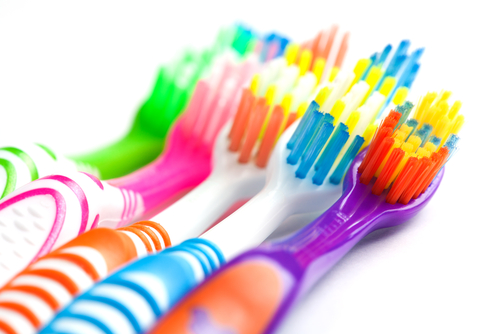SOME group of secondary school students in a hostel engaged in a competition recently. They wanted to find out who will spend more minutes brushing their teeth. It was, indeed, exciting. Even those who used to brushing their teeth within 30 seconds stayed longer this time. They wanted to impress and show they could brush their teeth for a longer period. Eventually, the winner emerged, he spent 25 minutes! The teeth must be whiter than others, one will guess.
Another scenario is the toothbrush in use today. Most people prefer the hardest texture toothbrush to the soft ones. They believe it is the best and would clean the teeth of plaque and eventually leave the mouth with good breath. Incidentally, such toothbrushes are even cheaper to come by.
They not only damage the gums, they also leave the palate in sore, with taste bud, which sends signals to the brain when stimulated, thereby producing the sense of taste, also affected.
The single most and the biggest mistake people make is that they brush too hard. People think if they brush too hard, they will remove the plaque. Nothing could be farther from the truth. Removal of plaque with a toothbrush is done as hard as one would brush one’s eyelashes and that’s how well to remove the plaque.
Glo Science founder, Dr Jonathan B. Levine, in a documentary released by Business Insider recently, showed that an average American brush teeth for 37 seconds, saying that’s about how much time one needs to brush a quarter of the mouth. To brush teeth thoroughly, he said a minimum of two minutes for all, about 30 seconds for each quadrant.
According to Dr Levine in the documentary, the outside and inside are where one needs to brush for two minutes. “You have got to spend the time. You can’t do it too hard. You have to do it effectively and it’s all about proper technique,” he adds.
Many dentists agree that proper brushing takes at least two minutes. Dr Anna Guarna, a dentist for over 20 years in Connecticut, goes one step further and typically ask her patients brush for three minutes – one and a half minutes on both the upper teeth and the bottom teeth. Most people don’t even come close to brushing for two minutes let alone three. Three minutes can seem like a long time, especially for little ones. Dr Guarna recommends using a time to make it a bit more fun. There are also electronic toothbrushes that have self-timers to help one get back on track.
Again, working with dental professional and hygienist will make one to have a great brushing technique, Dr Levine further counsels.
Toothbrushing mistakes and how to fix them
Choose the right tool – Just any old toothbrush may not be the one for you. Think about the size of your mouth, says Dr Richard H. Price of American Dental Association. “If you are straining to open wide enough to let the brush in, the brush is probably too big,” he says. Know your bristles too, if they are really still hard, they can hurt your gums. A soft brush is best.
Give it time
Are you brushing enough? Twice a day is recommended, but Dr Michael Sesemann says three times a day is the best. Two minutes for each time is okay.
Don’t overdo it
Brushing more than three times a day might not be ideal, Sesemann says. That’s because too much can damage gums and wear down the outer shell of the teeth, called enamel. Be gentle, it doesn’t take a lot of force to remove plaque, he says.
Perfect your technique
Is your technique right? Wide, side-to-side strokes can scrape your gum line, Sesemann says. Hold your brush at 45-degree angle to your gums, and make an up-and-down motion. Don’t forget about hard-to-reach areas.
Pick products wisely
The kind of toothpaste one use matters. According to Sesemann, plain old fluoride toothpaste is okay. Also, if one wants to lighten smile, one can always switch between whitening toothpaste and regular.
Store your brush properly
Most people store brushes in the bathroom, however, it is not the cleanest place in the house. To keep brushes tidy, stand it up in a holder. Leaving it on the counter could expose it to germs from the toilet or sink. Don’t let two brushes touch if they are stored together. Keep it air dry always, as a moist brush is more likely to grow bacteria.
Get rid of old brushes
One should get a new brush every three or four months. Also, when one notices bristles are losing their normal flexibility and start to break apart, it is advisable to change the brush. To decide which brush to buy, ask your dentist.
WATCH TOP VIDEOS FROM NIGERIAN TRIBUNE TV
- Relationship Hangout: Public vs Private Proposals – Which Truly Wins in Love?
- “No” Is a Complete Sentence: Why You Should Stop Feeling Guilty
- Relationship Hangout: Friendship Talk 2025 – How to Be a Good Friend & Big Questions on Friendship
- Police Overpower Armed Robbers in Ibadan After Fierce Struggle





